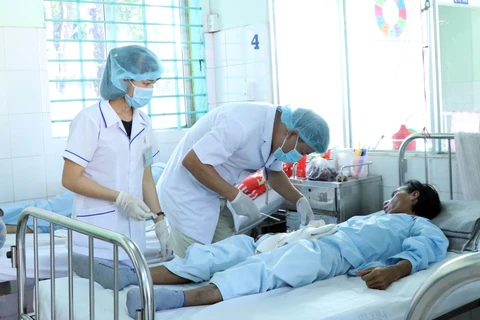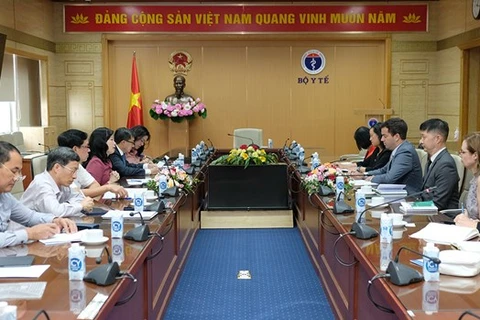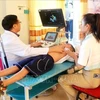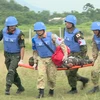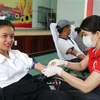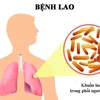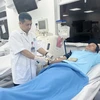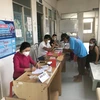 Each year, between 12,000-13,000 new HIV infections are detected during the 2021-2022 period. (Photo: Vietnam+)
Each year, between 12,000-13,000 new HIV infections are detected during the 2021-2022 period. (Photo: Vietnam+) Hanoi (VNA) - According to the Department of HIV/AIDS Prevention and Control under the Ministry of Health, more than 240,000 people in Vietnam are currently living with HIV/AIDS.
HIV/AIDS is a crucial public health issue in Vietnam as it is one of the leading causes of healthcare burden in the country. According to experts, there are still many barriers in accessing health services related to HIV/AIDS prevention and control.
Numerous difficulties remain
Associate Professor Phan Thi Thu Huong, Director of the Department of HIV/AIDS Prevention and Control, noted that in recent years, the health insurance fund has been instrumental in Vietnam’s HIV/AIDS prevention and control programmes.
Participation in health insurance among people living with HIV has increased to 95%, doubling within just five years.
To date, the health insurance fund has paid an average of 400 billion VND (16.8 million USD) per year, with approximately 200 billion VND (8.4 million USD) allocated for medical examinations and treatment services and 2000 billion for ARV drugs.
According to Huong, people at high risk of HIV and those living with HIV require access to a range of preventive health services, including support for COVID-19 prevention products, medical examination and treatment for sexually transmitted diseases among the men who have sex with men (MSM) group, and assistance with testing and receiving HIV test results, among others.
However, barriers persist in accessing health services for HIV/AIDS and COVID-19 prevention and control, especially during the quarantine period due to the pandemic.
These barriers include regulations at quarantine sites, financial difficulties, social stigma, lack of information about available health services, complicated support procedures, and inadequate COVID-19 protective equipment, according to Huong.
Simplification of procedures needed
Between 2021-2022, there has been a 20% increase in new HIV infections, with 12,000-13,000 cases detected annually, compared to 10,000-11,000 cases in the 2019-2020 period.
This highlights the effectiveness of new paradigms in HIV testing and access, as well as the implementation of prevention measures.
 The group of men who have sex with men (MSM), a high-risk group for new HIV infections, has continued to increase over the past 20 years. (Photo: Vietnam+)
The group of men who have sex with men (MSM), a high-risk group for new HIV infections, has continued to increase over the past 20 years. (Photo: Vietnam+) Nguyen Quyet Chien, General Secretary of the Vietnam Union of Science and Technology Associations (VUSTA), said the organisation has participated in the Global Fund project since 2011, initially as a sub-grant unit and later as a main sponsor since 2015.
In the 2021-2023 period, the project aims to increase the participation of social and community organisations and implement programmes in 15 provinces and cities throughout Vietnam.
Since 2018, the VUSTA in collaboration with the Global Fund has worked to promote a favourable legal environment and policy enforcement to facilitate access to health services for vulnerable groups.
The Department of HIV/AIDS Prevention and Control has closely worked with ARV drug procurement units to supplement ARV drugs. They have also regulated ARV drug sources to support facilities that currently lack drugs./.


